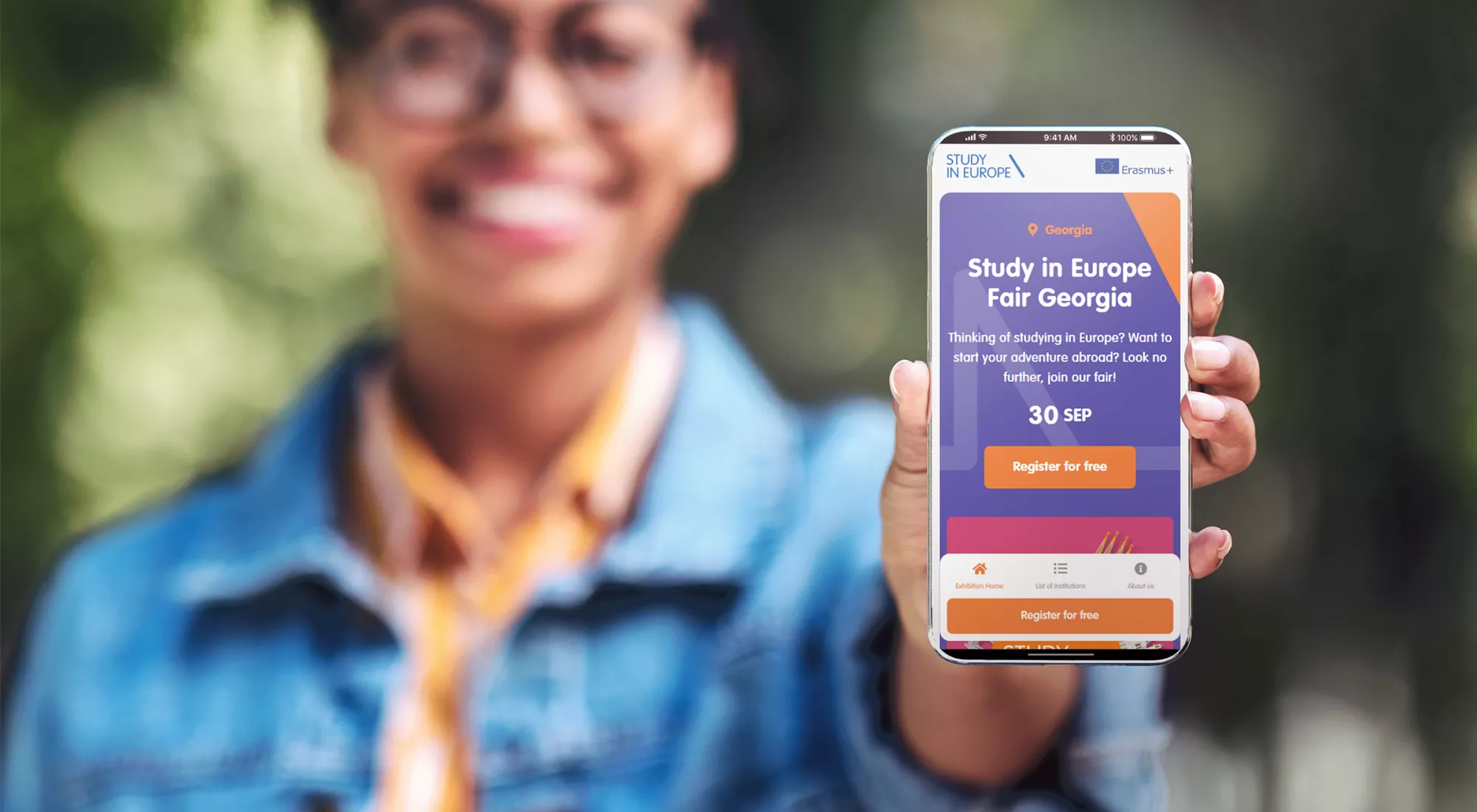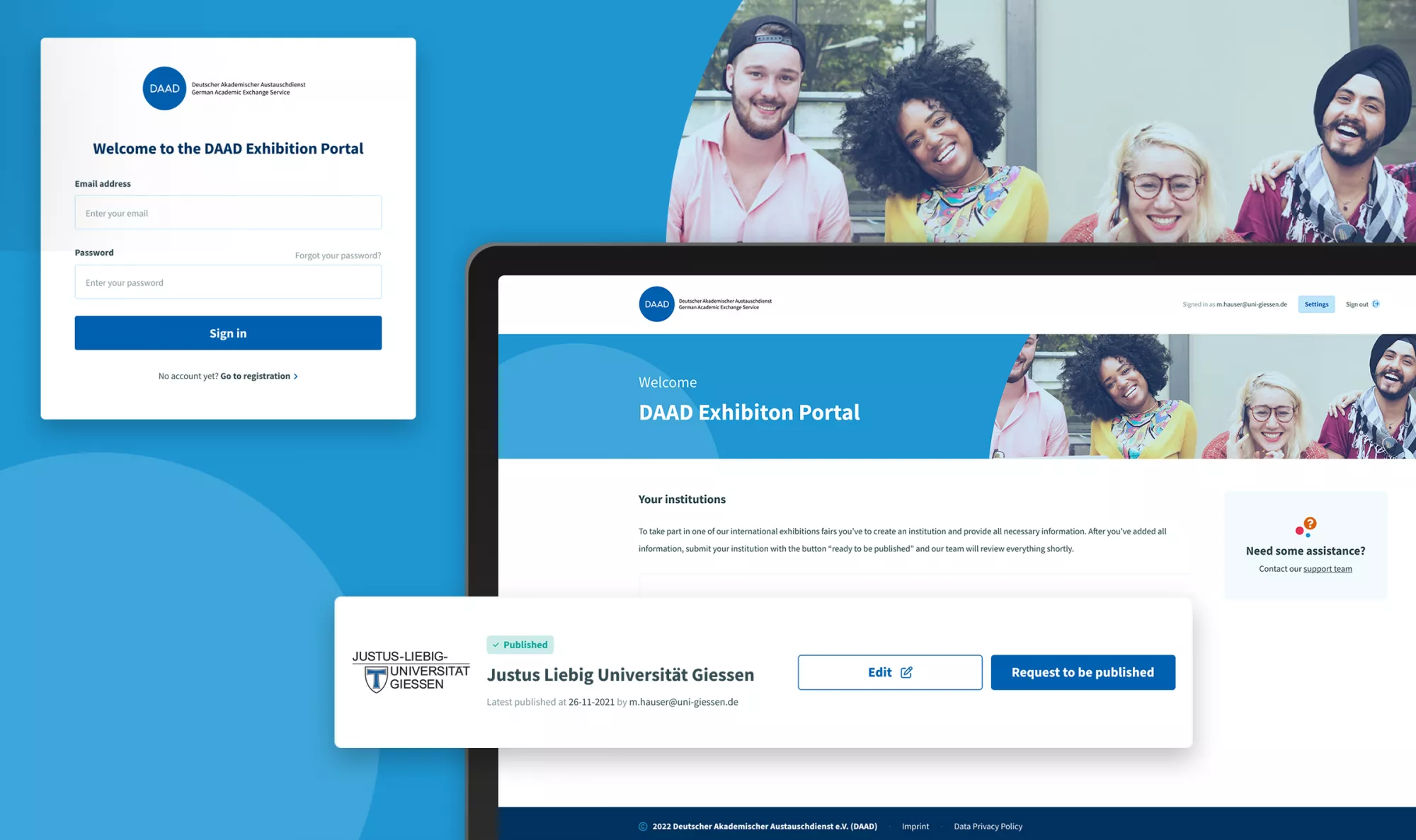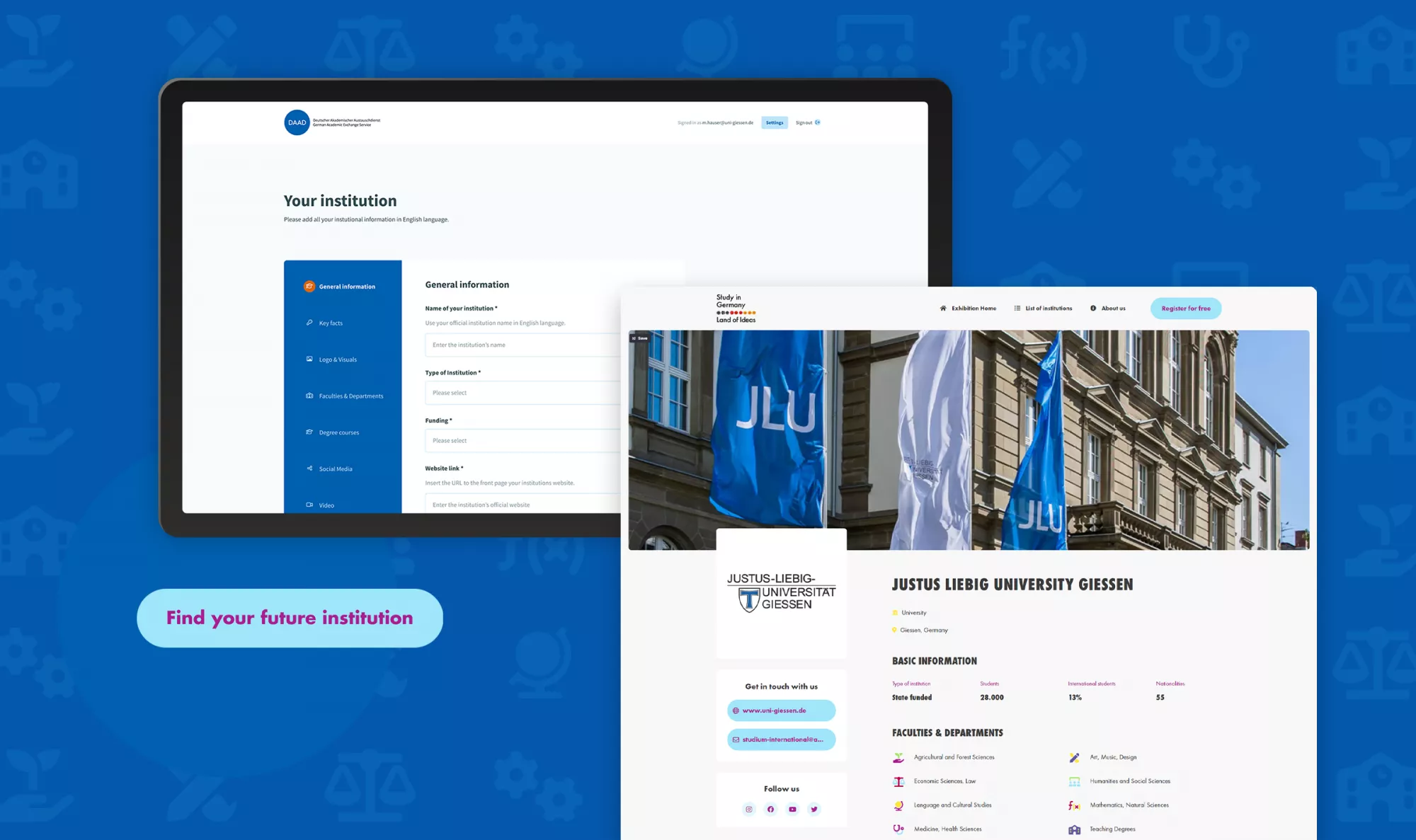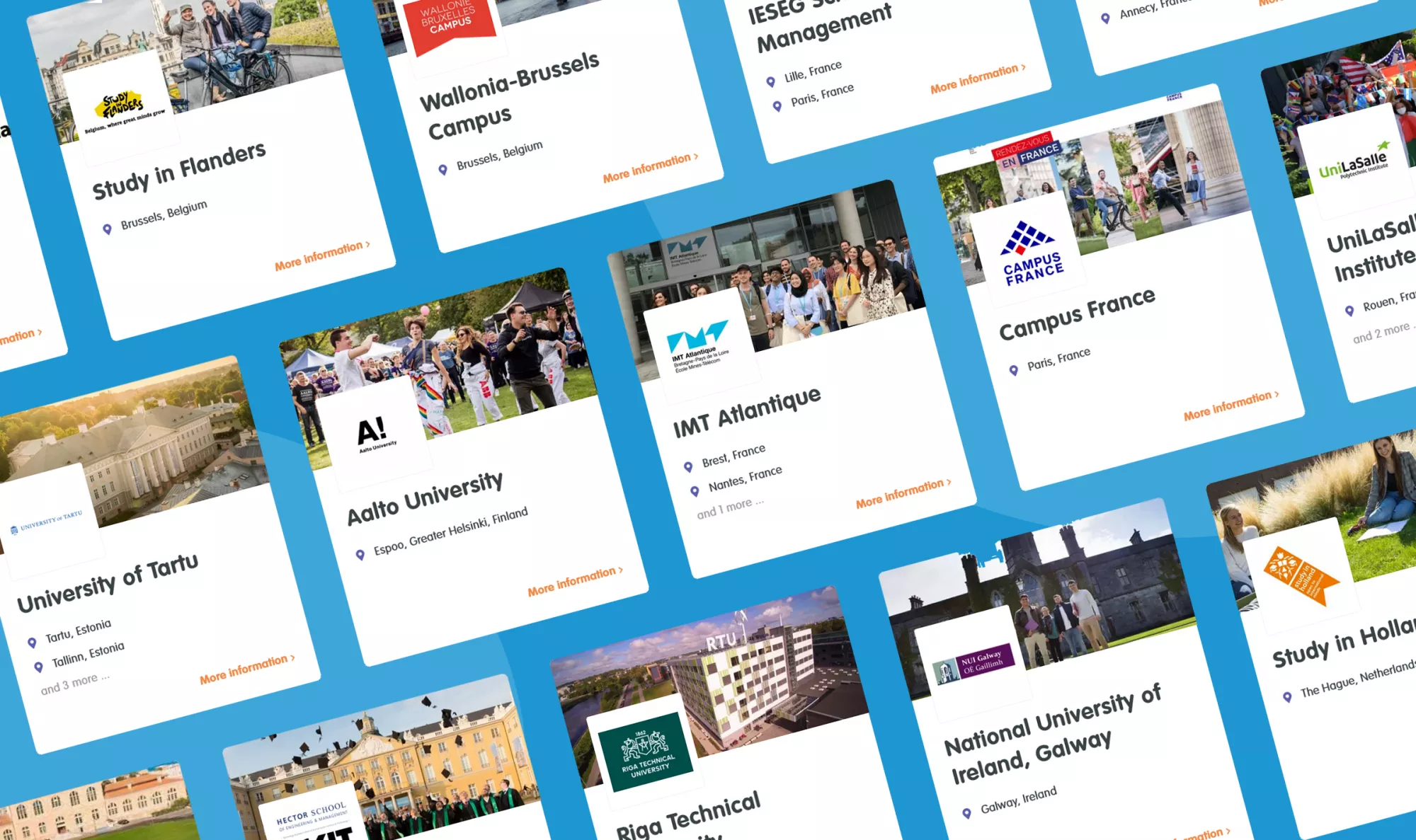
Create landing pages quickly and maintain them easily
With the new Exhibitor Catalogue, we support and relieve the DAAD in the area of trade fair promotion.
Presenting studying in Germany and Europe as attractive
"Study in Germany" and "Study in Europe": As part of these umbrella campaigns, the German Academic Exchange Service (DAAD) organizes numerous online and face-to-face fairs every year. The aim: to convince potential students of the advantages of German and European universities. How does the world's largest funding organization for the international exchange of students and academics achieve this quickly, easily and attractively? With our Drupal-based "Exhibitor Catalogue" database, among other things.
Landing pages had already been created in the past to promote the trade fairs. However, the process up to the finished website was characterized by complex communication and high costs. This is where we came in together with the DAAD and found a clever solution.
- trio-group sets up a database based on Drupal CMS that combines all information relevant to the trade fair in one source
- Implementation of an intuitive interface with which the employees of the participating universities can enter the data easily and independently
- Programming of decoupled trade fair pages that can be created and filled in by the DAAD editors themselves thanks to the clear user guidance we created
- trio-group develops freely selectable design themes that can be quickly and easily adapted to the updated CD manuals of the campaigns if required

The idea of the self-maintaining database
How do you manage to efficiently collect all information from the institutions participating in the trade fairs centrally and make it available to interested parties - even after the trade fair? Our solution: a database that is maintained by the universities themselves. Technically, this is based on a Drupal system, which already fulfills many of the rudimentary tasks "out-of-the-box". The first step is for the responsible persons at the institutions to register with a valid e-mail address. This initial registration is then checked manually by the DAAD and after activation the institution has access to the database interface.

Good usability ensures high acceptance of the institutions
The database interface has a neutral DAAD design and clear user guidance. The participating university is created from the dashboard. The person responsible then goes through a linear process in which they can add basic information, key facts, contact details, social networks, images and videos for the institution. The process can be paused and saved at any time. Once all the information has been entered, it is also sent to the DAAD for approval. The process can be repeated as often as required - even if the Exhibitor Catalog is already online. It is also possible for several persons responsible at an institution to edit the data at the same time.

A finished landing page in just a few minutes
For the trade fair pages themselves, we designed and developed two templates with the same structure. One template corresponds to the style guide of "Study in Germany", while the other follows the campaign design of "Study in Europe".
In addition to general information about the fair, the websites contain an overview of all participating institutions and detailed pages based on social media profiles. These allow potential students not only to get a feel for the university, but also to contact the institution directly via various channels.
For online fairs, a registration link to the respective event platform is stored, while for events in presence, the locations in the respective country are listed.
The landing pages are created by the DAAD staff, who can access the database in the same Drupal system with just a few clicks. Now that the lion's share of the work has been spread across many shoulders on the institutional side, the DAAD can concentrate fully on promoting the event.





